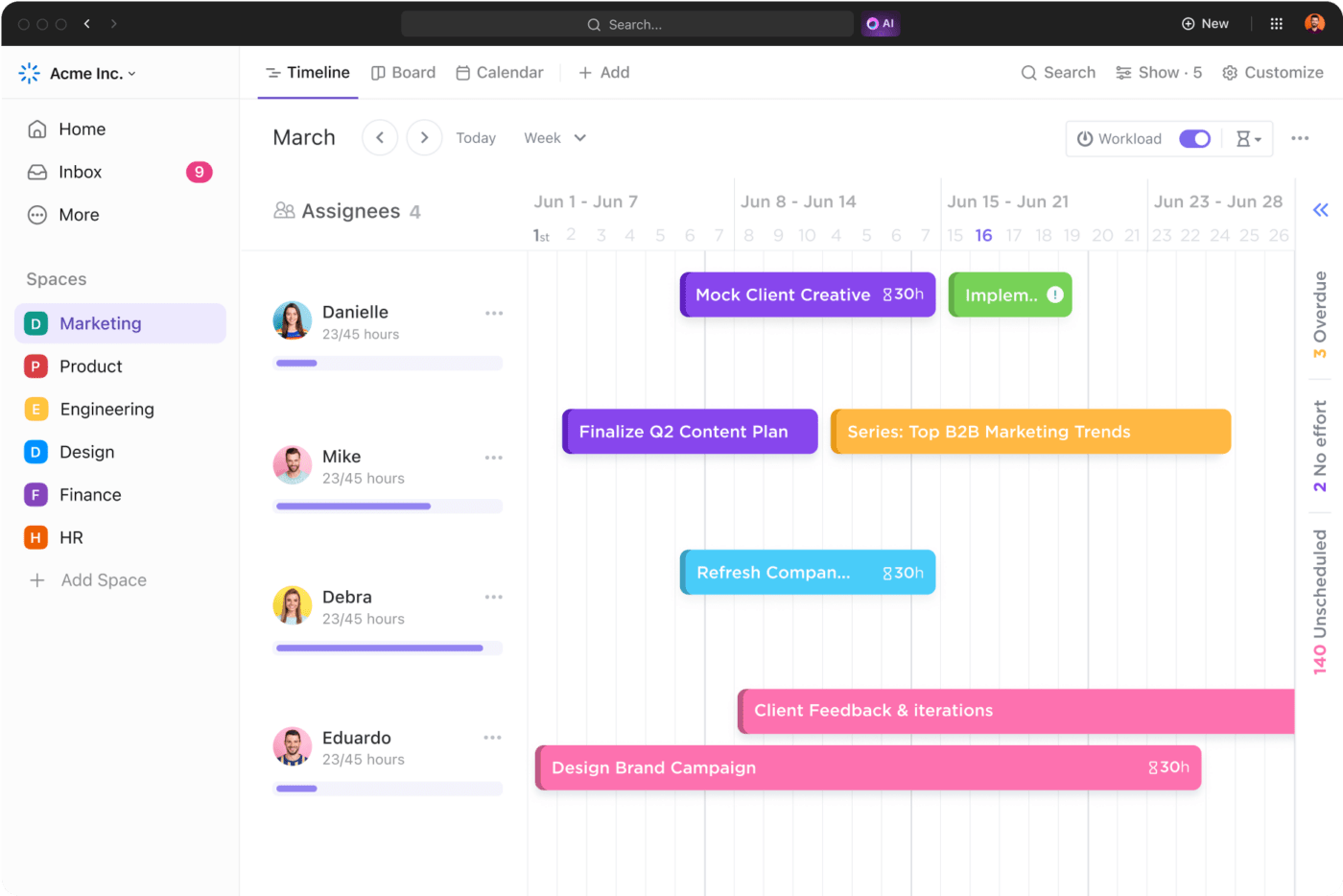6 Process Mapping Examples & Strategies

Sorry, there were no results found for “”
Sorry, there were no results found for “”
Sorry, there were no results found for “”

You’re trying to become a more efficient team, so what do you need to do to improve?
Process mapping might be the tool you don’t yet know you need.
A process map makes what’s happening within a business visual—whether that’s operations, how projects are managed, how your procurement systems are set up, or even how you’re handling incoming customer support tickets.
It’s a surefire way to pinpoint inefficiencies, gaps in your thought processes, and fixable bottlenecks. But creating a process map that’ll help you improve requires that you get familiar with all things process mapping.
Once you nail the mapping symbols and best practices down, you’ll see how easy it is to create handy process maps from scratch (or use a premade template can really help too!) Buckle up and take a deep dive into the world of process mapping below.
Modern teams face two hidden challenges — Work Sprawl and AI Sprawl. Tasks, tools, and data are scattered across platforms, while disconnected AI apps create more noise than clarity. Process mapping helps bring everything back under one system, so teams can see how work actually flows — and where it breaks.

Process mapping is a visual representation of a process that helps to identify its most important components and potential inefficiencies. It provides an overview of the process, outlining the sequence of events, tasks, and steps involved in achieving a particular outcome.
Businesses use this approach to identify bottlenecks in their workflow and ultimately improve their results. Process maps should essentially work as an outline of how your team will get projects across the finish line.
Process maps can be used in a variety of ways. It all depends on your team goals and the current structure of your business processes. But for the most part, there are six common types of process maps. Let’s take a look at each one and how they work.
In this standard process map, shapes and symbols represent different tasks and events. Process mapping from start to finish typically relies on flowcharts.
When you’re mapping out your entire process, flow charts are useful visual tools to represent a series of steps. Out of the various types of process maps, this one clarifies complex procedures or systems and makes it easier to identify areas for improvement or optimization.
Additionally, you can use ClickUp’s Whiteboards feature to help with communication and collaboration among team members, particularly when working on projects that require multiple steps or involve multiple stakeholders.
The lanes in a swimlane map represent the responsibilities of different individuals or departments involved in the process. Diagrams with swimlanes are useful for mapping out complex processes involving multiple departments.
Use the ClickUp Swimlane Flowchart Template to clarify who on your team is responsible for each step—whether it’s multiple individuals or entire teams. By organizing information by lanes, swimlane flow charts make it easier to see potential bottlenecks or delays so you can improve your business processes with a detailed process map.
As the name implies, this map does exactly what it says. The map shows which activities in a process have the most impact on your business processes and which have the least. It’s useful when determining which activities provide the best return on investment to refine your budget accordingly in your process mapping stage.
Value stream maps are also known as material and information flow mapping. It outlines the steps in a process and the resources it uses at each stage. In fact, value stream maps visualize how information and materials move through process mapping from beginning to end.
Use the ClickUp Value Streaming Map Template to maximize the efficiency of your operations and thoroughly analyze your current state. This value stream map template helps you develop an optimized implementation plan, so you can enhance your processes and drive your organization toward success.
Bonus: Check out the top 10 Value Stream Mapping Templates to Improve Team Processes
This diagram makes the decision-making process easier. That is, it helps teams drive improvements because it clearly outlines how processes flow to achieve desired results—which is great for project management. Think of it like a Mind Map or a Whiteboard to detail your overall flow.
You can make it even easier to build or update your process flow with a template. Use the ClickUp Process Flow Whiteboard Template to visualize your project workflows and enhance your process mapping procedures.
This diagram stands for Suppliers, Inputs, Processes, Outputs, and Customers. It lays out the key elements of a process in a chart-like form that’s easy to digest. A SIPOC diagram is a useful map when you’re trying to determine the scope of a project.
And no surprise here, but ClickUp has a template for it to help with process mapping. The ClickUp SIPOC Template uses the board view easily detail the important aspects of your process so it’s simple to dissect and understand.
ClickUp was the best solution for us because it combines multiple project management tools into one. From Mind-Mapping to Documents to Sprints, ClickUp is a dynamic tool to organize any department’s task management needs and give visibility across the whole company.
Creating a detailed process map requires that you have a good understanding of your business operations. We’ve broken it down into a few helpful steps to give you a head start in process mapping.
First, select the process you want to analyze and make sure it significantly impacts your business operations. You also want to consider the scope of the process—decide whether to analyze a single department, cross-functional processes, or even processes spanning multiple locations.
For instance, you may want to map your sales process, focusing on how it interacts with your marketing and customer support departments.
Gather a team! The more heads you put together to create one consistent process map, the better. Tap the people who have expertise in different parts of the process mapping procedure.
This makes sure you capture the complete picture. Plus, it’s also a way to get buy-in from stakeholders. Encourage open communication and collaboration within the team. 🤝
This is where the rubber hits the road. It’s time for thorough research on the process. This may involve interviewing employees, observing the process in action, and reviewing relevant documents like standard operating procedures, work instructions, and key performance metrics.
Aim for a clear understanding of each step involved in the process, along with the inputs, outputs, and resources required for your process steps.
Where does the process begin and where does it end? Be sure the process boundaries are clear. Establish all preconditions, triggers, and postconditions relevant to the process.

For example, in an order fulfillment process, the starting point could be receiving the order, while the endpoint could be shipping the order or delivering it to the customer.
Break down the process into its individual steps. Identify all tasks, decisions, and events that occur from the start all the way to the end of the process.
Be as detailed as possible while considering sub-processes, dependencies, and exceptions that may arise during the process. This way, you create a comprehensive process map that truly showcases the intricacies of the business process. 💪
Have your process steps? Now it’s time to arrange the steps in the order they occur and assign roles or departments responsible for reviewing each step for accuracy.

Document any handoffs or communication points between roles or departments to ensure a smooth process flow. This takes collaboration.
Which means you’ll need collaborative tools. With ClickUp Whiteboards, teams easily sketch process maps, label symbols, and share their maps with the whole company so everyone is in the know.
Use standard process symbols and notations to represent the different elements of the process. Consistency is key for easy reading and understanding.
Some common symbols include:
Here’s a hint: Add swimlanes to your process map to represent roles or departments. It’ll help you visualize the division of responsibilities and interactions within the process.
Review the process map with the process mapping team and other relevant stakeholders. You’re looking to validate its accuracy here to make sure it accurately draws out your most updated process.
Encourage feedback and incorporate any necessary changes to refine the map. This step helps create a process map that everyone involved agrees upon.
Analyze the process map to identify areas for improvement, such as bottlenecks, redundancies, or inefficiencies. This is where teams are able to use the process map to facilitate discussions, streamline workflows, or automate repetitive tasks.

Process mapping provides several benefits that help businesses improve their operations and process management key elements.
Especially if you’re a project manager, you need to ensure your team is getting the most out of their resources. This means less time wasted and more energy directed at results-oriented tasks that give your team the best return on their investment.
Unclear expectations are a nightmare for everyone involved. Your team doesn’t know what to aim for and milestones are more likely to be missed. Process mapping helps fix that by leveling expectations across teams.
Process maps ensure teams work from one source of truth. This leads to less confusion, miscommunication, and missed deadlines. It’s critical for teams to be on the same page about something as foundational as processes to a business.

Creating one process document that lives in one dashboard and that’s easily shareable leaves little room for error and missed opportunities in your process mapping creation. Processes and workflows evolve over time as new data comes, a new person joins the team, or net-new projects need to be tackled.
Consider that documenting past processes help in the creation of new ones. You can also help employees understand their roles and responsibilities with a detailed process map.
They need to see how their tasks fit into the bigger picture and understand how their work contributes to the overall process. Process mapping is a proactive way to improve team communication across departments—including external partners or customers.
Process mapping enables businesses to become more agile by identifying areas where changes may be applied quickly.
With a clear understanding of the process, businesses identify areas to streamline operations, automate tasks, or even outsource certain activities. Responding to changing market conditions or customer needs more effectively becomes that much easier. ⚙️
Consider some pointers that’ll improve your next process mapping initiatives:
By creating a visual representation of a process, businesses identify potential inefficiencies, reduce errors, and improve quality. Using a platform like ClickUp helps your process mapping efforts through templates, interactive Whiteboards, and even Mind Mapping tools to elaborate everything for your team.
Creating a process map that’ll improve operations and help teams visualize areas of improvement is simple. Your process map shouldn’t be overly complicated, and neither should the software you use to create it.
With this detailed guide, you’re well-prepared to create a comprehensive process map that helps your team understand, analyze, and optimize crucial business operations.
Treating them as static documents. In ClickUp, you can update maps dynamically as workflows evolve, preventing outdated processes and confusion.
AI can summarize workflows, identify redundant steps, and even suggest automation triggers. ClickUp Brain brings this intelligence directly into your workspace.
Ideally every quarter—or whenever there’s a major process change. With ClickUp templates and dashboards, updating your map takes minutes, not hours.
ClickUp’s visual tools (Whiteboards, Flowcharts, and Dashboards) ensure teams collaborate in real time, cutting down miscommunication and duplicated steps.
© 2025 ClickUp